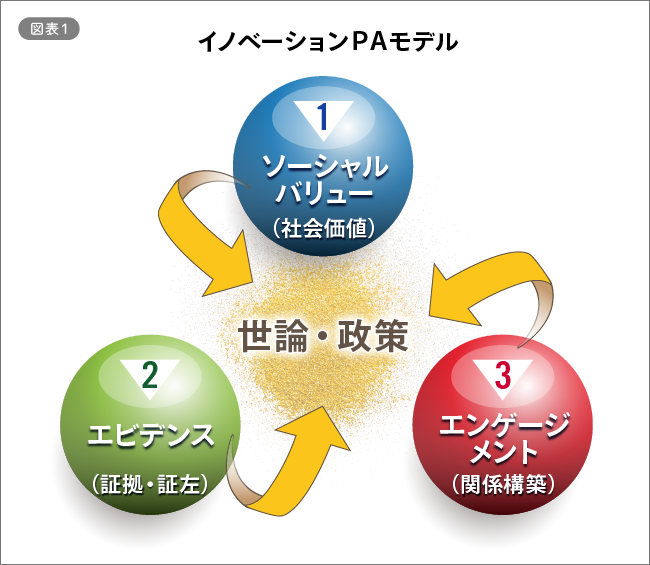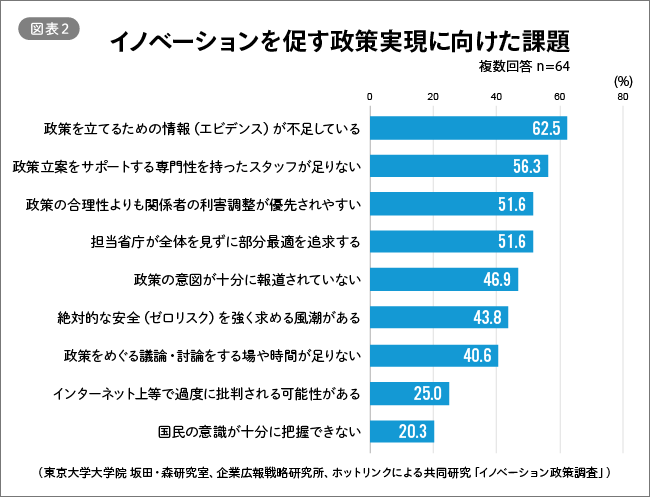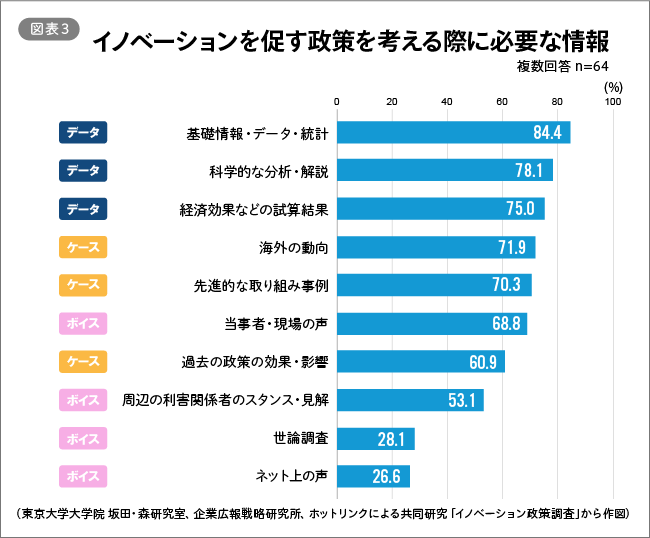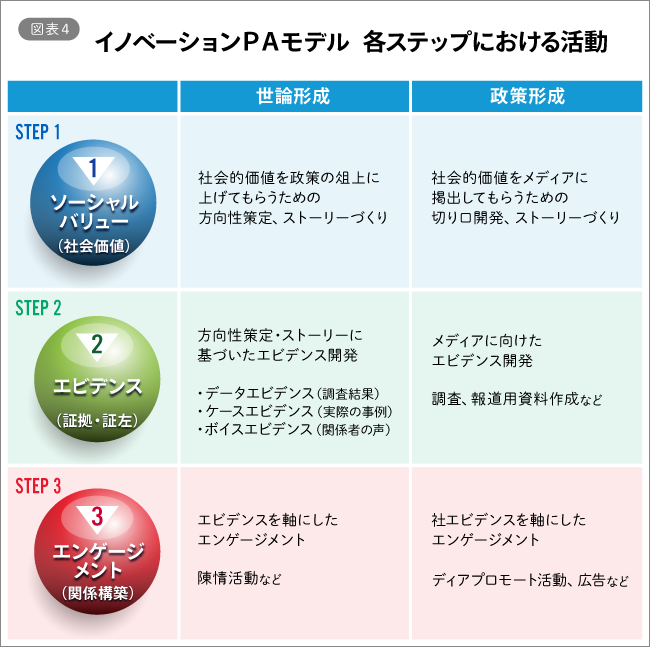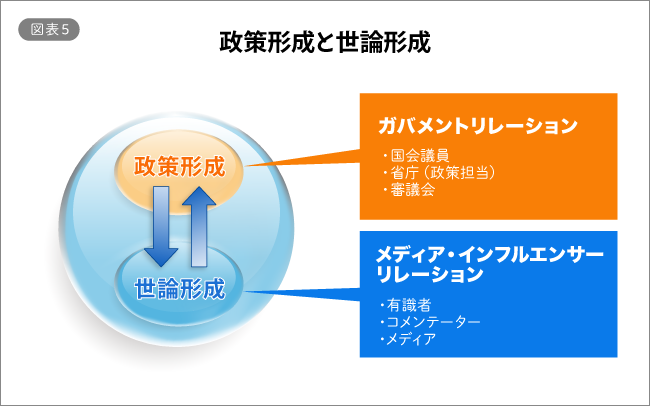In previous installments, we positioned "challenges whose resolution significantly transforms society, the economy, and daily life for the better" as "social innovation challenges." We examined the proposition "Why is PA (Public Affairs) activity necessary for corporate innovation?" specifically addressing the existence of a perception gap between policymakers and corporations, and rule-making.
This time, Kenji Naka from Dentsu Inc. Public Relations' Public Affairs Strategy Department introduces the new "Innovation PA Model," a key consideration for PA activities.
Innovation PA Model
The "Innovation PA Model" (Figure 1) is a framework developed by Dentsu Inc. Public Relations. It was created by studying past successful PA activities that achieved regulatory reform, conducting interviews with key stakeholders, and analyzing the findings.
This Innovation PA Model identifies three key points: "Social Value," "Evidence," and "Engagement."
1.Social Value:
"Social Value" refers to societal value. In PA activities, the perspective of whether the activity can contribute to societal benefit and development is essential. It is crucial to sense public opinion, construct narratives aligned with societal demands and context, and be able to make proposals from a medium- to long-term perspective.
A common pitfall is constructing self-centered, "petition-style" narratives that push for the company's own profit generation or securing vested interests. Stories lacking an appeal to social value and without an approach aimed at solving societal issues will not only fail to gain public support but will also fall on deaf ears among policy makers. Only with social value can you earn the understanding of citizens and the support of public opinion.
2.Evidence:
"Evidence" refers to proof or substantiation that validates the legitimacy of social value and brings it into the discussion. As introduced in Part 2 of this series, lawmakers cite "lack of evidence" as the biggest challenge in implementing policies that promote innovation (Figure 2).
The survey results reveal three patterns of evidence required by Diet members (Figure 3).
The first is "data" evidence, such as statistical data and quantitative indicators like economic impact. The second is "case" evidence, including overseas examples and past cases. The third is "voice" evidence, which includes the voices of local constituents and stakeholders. To create social value, evidence that gains public support must exist. With such public backing, rulemakers, especially Diet members, cannot afford to ignore it.
3.Engagement (Relationship Building):
"Engagement" refers to activities aimed at building trust and shared understanding with policymakers who create policies and with media professionals who communicate them to the broader public. Specifically, it involves promoting understanding through activities like lobbying and promotional campaigns, based on the aforementioned social value and evidence.
The key to success in the Innovation PA Model lies in the integrated approach encompassing these three points.
Simultaneously, a dual-pronged approach targeting both "public opinion" and "policy" is crucial. The secret to successful PA activities lies in this dual approach: engaging the media, which influences the many voters shaping public opinion, and engaging policymakers and other rule-makers who are sensitive to voter sentiment.
What Public Affairs Can Solve
What Public Affairs can achieve is the formation of rules that are sustainable and have growth potential for both society and the company itself.
As the Japanese economy globalizes, companies operating solely within the given framework (rules) will fall behind in competition. To win the competition, it is necessary to build a favorable foundation for the fight – that is, to proactively advocate for rules that enable innovation for the company itself. This is common practice in Europe and the United States.
As mentioned earlier, it is crucial to note that no matter how much a company advocates for rules that are solely convenient for itself, such self-centered rules will never gain acceptance in public opinion or policy.
To survive and thrive in domestic and international competition, companies should leverage the three steps outlined in this Innovation PA Model to enable rule-making that gains societal acceptance.
The next issue will cover the importance of gathering overseas information in PA activities and introduce U.S. think tanks.
[Survey Overview]
• Survey Name: Innovation Policy Survey (Survey of Members of the National Diet)
• Survey Organizers: Sakata-Mori Laboratory, Department of Technology Management and Strategy, Graduate School of Engineering, The University of Tokyo; Corporate Public Relations Strategy Institute (within Dentsu Inc. Public Relations); Hotlink
• Survey Method: With the cooperation of the Diet Members' League for the Promotion of Digital Society, questionnaires were sent to all Diet members (both House of Representatives and House of Councillors). Responses were obtained via the questionnaire or online.
• Survey Period: December 9, 2017 – April 8, 2018
• Number of Responses: Total 64 (43 House of Representatives members, 21 House of Councillors members)

